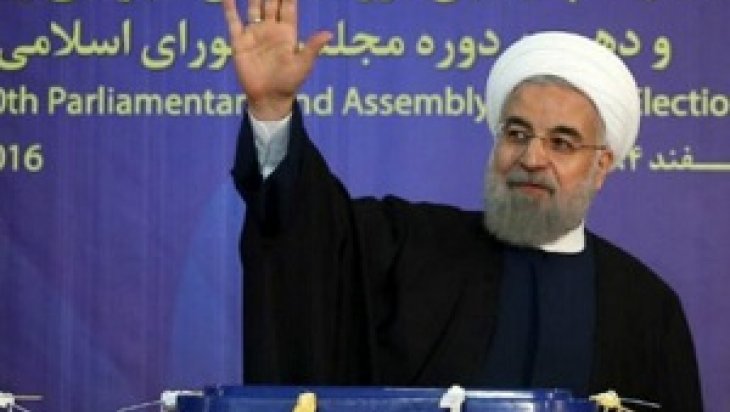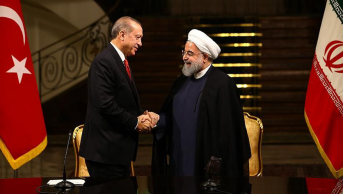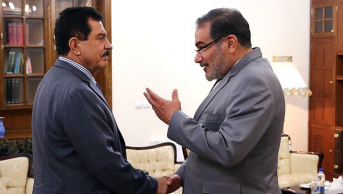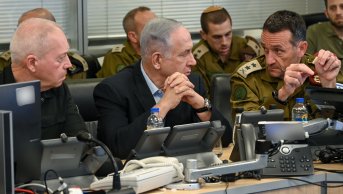Iranian Politics After the Nuclear Deal

A new stage of the nuclear deal (Joint Comprehensive Plan of Action, Barjam), which was signed in July 2015 between Iran and the P5+1, the implementation phase has begun in January 2016. This development, which signifies that the sanctions imposed on Iran due to its nuclear program are lifted, has certainly and mostly pleased President Hassan Rouhani, the Iranian architect of the deal. Rouhani, who built his whole political strategy onthe solution of the nuclear issue through diplomatic means, described the deal as victory for Iran. In addition to the nuclear deal, the results of Iranian elections for Islamic Consultative Assembly and Assembly of Experts of the Leadership, held on 26 February 2016, have also reassured him. The elections were a success for the supporters of Rouhani even though they did not secure an absolute majority in the Parliament and Assembly of Experts, whereas the Principalists, who had been harshly criticizing the policies of the Rouhani government and the nuclear deal, lost the upper hand in the Parliament.
Rouhani’s Search for a New Social Contract: A ‘Second Barjam’
Although it has primarily aimed at addressing the controversies around the Iranian nuclear program, the deal is also expected to make significant changes, both in domestic and foreign policies of Iran due to its economic and political consequences. Plenty of speculations and evaluations have been made in this respect, many of which regard the deal as a turning point in Iranian politics and speak of an “Iran after the deal.” In his article, published in the journal namedMiddle East Report, ArangKeshavarzian describes the nuclear deal as a new “social contract” for Iran. Indeed, Rouhani had stated that Iran took a step forward in its foreign affairs,owing to this deal. Having been encouraged with the election results, Rouhani, in his Norouz message, stated that the nuclear deal was a historic success to be remembered proudly. He also said that “a national plan of action, a second barjam” had to be developed in order to address the financial and political problems of Iran, which already has begun with the elections.
However, right after the elections, Rouhani encountered new problems. On the one hand, the disputes related with the nuclear deal continued intensively, while on the other, the dynamism and tension in Iran's politics escalated after the elections. The political tension in Iran reached its peak soon after the elections, as a war of words took place between Rouhani’s ally Ayatollah Hashemi Rafsanjani, the chairman of Expediency Discernment Council, and the Leader, Ayatollah Ali Khamenei. On 23 March 2016, Rafsanjani tweeted "The world of tomorrow is a world of discourses, not missiles.”Inreaction to that, in his speech on 30 March, Khamenei said that "those who stated that the country's future lies in negotiations rather than missiles are either ignorant or traitors.”In response, Rafsanjani said that his tweet was only a part of what he meant to say, and that he was misunderstood, reminding that he himself initiated Iran's missile program.
Currently in Iran, the most important topic that causes disputes is the implementation of the nuclear deal. At the same time,the dispute over the ballistic missile program can be seen as another extent of the nuclear-related disputes. Ayatollah Khamenei never opposed or supported the nuclear deal publicly, even though he supported the negotiations from the very beginning. He did, however, point out that the Western countries could not be trusted entirely. Indeed, it has been more than three months since the nuclear deal is implemented and yet there are still problems with the sanctions relief. The European Union extended its sanctions against Iran by one year, due to the claims of violation of human rights. Likewise, having lifted their sanctions imposed on Iran exclusively for the nuclear program, the United States still continues to impose sanctions on Iran due to its policies towards Syria, alleged support for terrorism, and violations of human rights etc..Early in April 2016, Jacob Lew, US Secretary of the Treasury, said in his statement that the US financial system would stay closed to Iran. Likewise, both US and Iranian authorities confirmed that Iran only received $3 billion of its assets outside the country, which is supposedly around $100 billion.
The principal expectation of Iran from the nuclear deal was the removal of sanctions related to the nuclear program. In fact, the exclusion of Iran from international money transfer system, i.e., SWIFT, and EU and US sanctions on all kinds of transactions of the Central Bank of Iran, dealta heavy blow to the international transactions and trade of Iran. Though these sanctions are now officially lifted, banking transactions in Iran still have not gone back to normal, due to technical problems and the complex situation of the sanctions. Also European banks and large conglomerates are operating extremely cautiously when it comes to transactions with Iran, because they somehow still fear of being exposed to the US sanctions.
The continuing problems in the implementation of the deal, though Iran has fulfilled its obligations, make Rouhani more vulnerable. In his speech in Mashhad on 21 March 2016, Khamenei stated that the nuclear deal crossed certain red lines and - without naming, but implying Rouhani-,he said, "those who propose a second, third barjams" as a solution for the problems ofthecountry "...are playing with fire.” He believes that "second barjam" means negotiating with the USA and changing some of Iran's fundamental policies in order to solve Iran's economic, social and political problems. There are three reasons why "Second barjam" is dangerous: Demands of the USA will never end, revolution will lose its meaning if Iran changes its regional politics, and as seen recently, the US government, whichfails to fulfill its own obligations, cannot be trusted.
After Khamenei's harsh criticisms, Major General Ali Jafari, the commander of the Iranian Revolutionary Guard Corps said "The nuclear deal has never been considered a document to be proud of." Since early April, there have been talks in Friday prayings about how the nuclear deal remains inconclusive and how the western countries do not keep their promises. Since Rouhani and his supporters played a part in the nuclear deal, they were also the target of criticisms.
During this period, when criticisms on the nuclear deal increased, M. JavadZarif, Minister of Foreign Affairs, and ValiollahSeif, Governor of Central Bank of Iran, visited the USA for negotiations. On 20April 2016, Rouhani responded to criticisms in his speech, saying that it had only been three months since the implementation of the deal and reminded that Iran's oil sales which nearly stopped because of the sanctions were now back to normal and that now many foreign investors were preparing for investments in Iran.
Dynamics of Iranian Politics after the Nuclear Deal
There are three aspects of the rising political tension that apparently revolves around the nuclear deal. The first one is related to Iran’s relations with the West. Rouhani's foreign policy strategy aimed to enhance Iran’s relations with the West after the resolution of the nuclear dispute. In this regard, he became the first president to participate in World Economic Forum after a long period of time. Additionally, after a 16-year interval, he paid visits to some European capitals as the president.With regard to the relations with the West, Khamenei said "I do not favor cutting ties with the West, but we must know whom we are dealing with … we must have relations with the whole world, except for the USA and the Zionist regime, but the world is not limited to the West and Europe."
The second aspect of the political dynamism inIran is related to the reconstruction of the Iranian economy and its opening up to the outside world. Rouhani proposed a "second barjam" while Khamenei proposed a "resistance economy" in their Norouz messages. Khamenei designated the new Persian year (1395) that began with Norouz, as the year of "Resistance Economy: Action and Implementation". The term "resistance economy" was initially put forward,when Iran faced with the sanctions. The utilization of this term for the economy of "Iran after the sanctions" is rather meaningful. The resistance economy, which means ongoing enemy threats and an attempt to minimize Iran's weaknesses on the economic field, is completely different from Rouhani's view of economic integration with the outside world; since the resistance economy is based on the idea of self-sufficient economy and restrainingengagements with the West. Khamenei and his conservative supporters believe that sustaining economic relations with the West would harm the economic independence of Iran and that the West might try to increase its political and cultural influence on Iran through foreign investments.
Third, the ballistic missile program of Iran has turned into a new controversial issue by the Western countries. This subject previously came up during the nuclear negotiations. Then, it was agreed that the sanctions related to Iranian missile program would continue for five more years, and Iran would not develop ballistic missiles capable of carrying nuclear warheads. The Revolutionary Guards tested a missile which had a range of 1060 miles (1700 km) and a payload of 1653 pound (750 kg) in March 2016, which was considered ‘dangerous and provocative’ by the USA, UK, France and Germany. Moreover, they brought the case to the UN Security Council by blaming Iran for violation of UN Security Council Resolution 2231. This developmentextremely disturbed the Iranian security elite and the conservatives. Accordingly, when the Westbrought up the missile program before addressing the problems related the implementation of the nuclear deal has given credibility to the claims, as put forward by Khamanei, that the West is not trustworthy and the Western demands will never end.
Rouhani wants the nuclear deal to be the beginning of a new era in Iranian politics, but both the state of relations with the West, and the differences of opinion with regardto basic economic policies are the main faultlines in Iranians politics since the revolution. These faultlines,which may roughly be described as disagreements between the conservatives and the reformists,are the major battlegroundsbetween the "globalists" and "nativists," as stated by Mahmood Sariolghalam. This long-term struggle has nowadays turned into a dispute and competition over the continuation ofthe power of Rouhani. Both the uncertainties in the implementation of the nuclear deal and the next presidential elections to be held in June 2017, lead to the intensification of this struggle.





